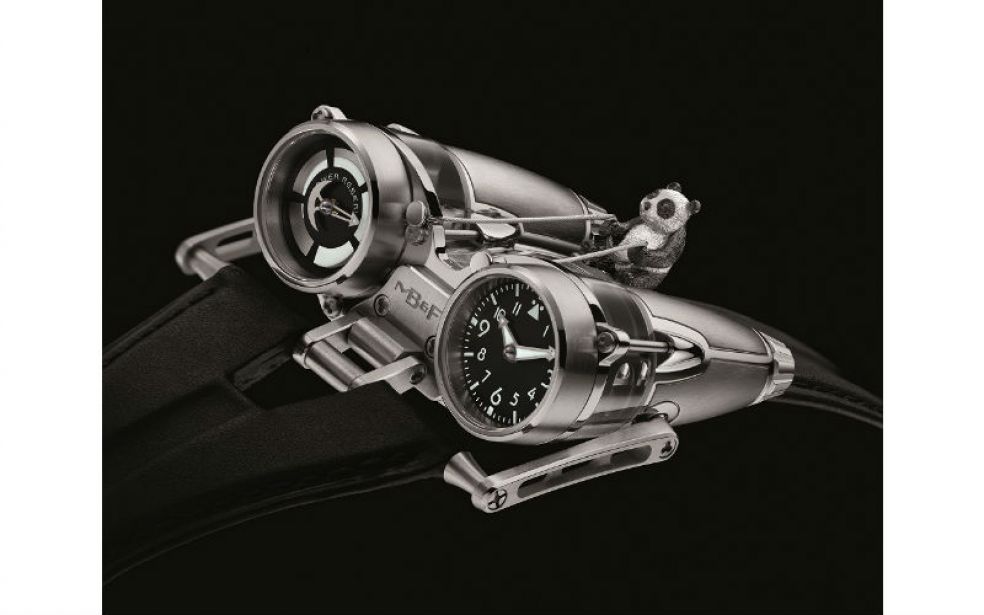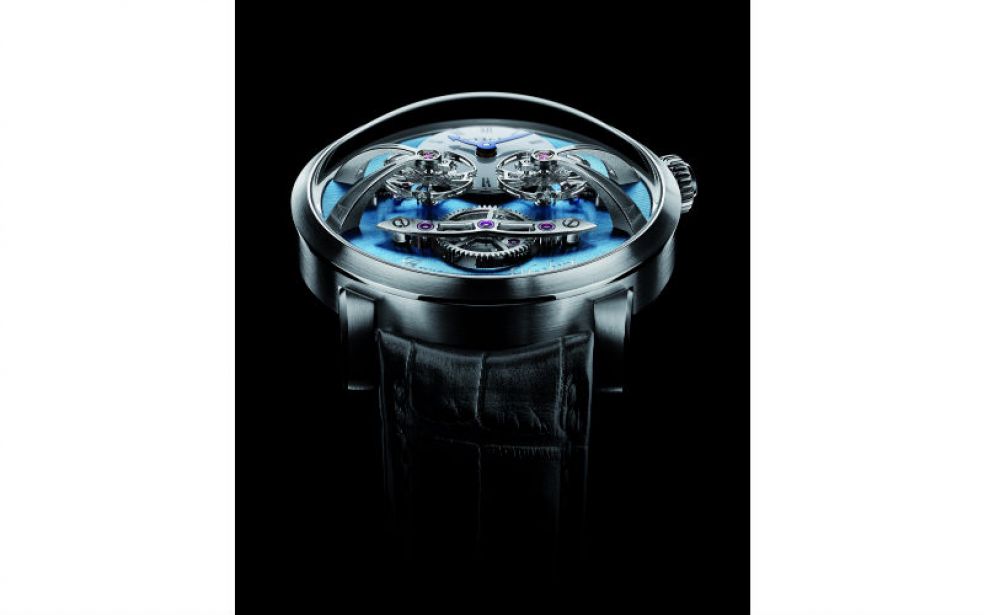An Interview with Maximilian Büsser, Founder of MB&F
It all started swimmingly enough. Buoyed by the success he had enjoyed as the head of Harry Winston Rare Timepieces, where he had repositioned the jeweler as an important player in fine horology with the Opus series, Maximilian Büsser decided to take the plunge in 2005 with the launch of his own company, MB&F, with a dream of “deconstructing beautiful traditional high end watchmaking and reconstruct them into 3D kinetic sculptures.” With CHF200,000 ($207,500) of savings and a further CHF500,000 ($520,000) in shareholder funding — the company name stands for Maximilian Büsser & Friends — he managed to secure orders from six retailers, willing to give him a 35 percent advance on orders, even though he could only deliver a year-and-a-half later, all on the strength of his designs and track record at Harry Winston.
By April 2006, in time for Baselworld, the biggest watch fair in the world, Büsser had a prototype in a gold case to show retailers and the excitement was mounting.
Then disaster struck. His movement supplier was taken over by the watch brand Bovet and it started to delay production of components for the first MB&F watch and, Büsser adds, also refused to assemble movements for the first watches.
“All my money was gone, we still hadn’t delivered a watch and we were going to be technically bankrupt,” Büsser said in an interview with Blouin Lifestyle. “When we finally managed to deliver two pieces in June 2007, it was like an American movie of the 1950s when the cavalry arrived at the last minute,” he added, recalling how watchmaker Peter Speake-Marin, who was creating the movement of his first watch in partnership with engineer Laurent Besse, called in many favors.
With its two strange-looking overlapping circular faces — one for minutes and the other for hours — and a tourbillon cage inspired by the battle-ax of a Japanese Manga hero, the Horological Machine 1 immediately attracted widespread press coverage and proved to be a success with watch aficionados.
There were other difficulties he faced along the way; while some like the financial crisis of 2008-2009 affected several companies, a few problems can also be pinned on the overly ambitious new entrepreneur who tried to create new lines faster than he could actually produce them.
“At one stage when everything works in your favour, you develop a bit of a god complex, you think you’re always right and you can achieve anything. I wanted to produce two new calibers a year, but financially it wasn’t viable and we nearly went under again,” he recalls candidly.
Today, the brand is producing about 285 pieces a year and has an annual turnover of CHF14.6 million ($15.2 million), two figures Büsser is very comfortable with, though he stresses, “this enterprise was never about making money. In fact all the profit we make we reinvest in the development of new timepieces.”
“I think too many entrepreneurs today create a company because they want to make money which is the worst reason, because 90% will go bankrupt. The only reason you should create a company is because it’s a calling and you can live with the fact that you might fail – because at least you tried,” he adds.
“For me, innovation and brand integrity are extremely important. We’re writing our own story, but the end game is not to increase our revenue or profit, it’s to be able to express ourselves.
"I create what I believe in, not what I think the market wants. In fact I like to say ‘we’re not client centric, we’re creative centric.’ Brands that are client centric keep on doing the same product, brands that are creative centric are constantly innovating,” he notes.
Design innovation has been at the heart of the young brand, which has created its own niche with its nonconformist wristwatches.
The HM3 was nicknamed Frog for its bulbouseyed appearance, while the HM5 was nicknamed On the Road Again because of its clear inspiration from supercars of the 1970s and the biomorphic HM6 is called the Space Pirate for its futuristic and still nonconformist spacecraft styling with four domed sapphires and a flying tourbillon in the center. The brand has also provided an avant-garde take on a traditional round complication watch with its Legacy Machines series.
But Büsser’s favorite piece is the HM4 Thunderbolt with dual dials that look like jet-engines. “This was the piece I was the most scared of, because I really didn’t know how people would react, but we sold out faster than any other creation. This design really freed me creatively and gave me the courage to develop much more polarizing creations, including extremely ambitious and cash intensive four-year developments,” he says.
Since 2011, Büsser has doubled as an art curator. MB&F’s MAD gallery opened in Geneva in October 2011 to offer kinetic art pieces that Busser selects and the gallery has now welcomed over 20,000 visitors and sold around 1,900 pieces of art. It has led to a franchise gallery that opened in Taipei in 2014 and a second in Dubai, which will open this month. The company is now exploring newer avenues by moving in new directions. In 2013, for instance, MB&F launched a music machine, which was the first project that Büsser created that is not a watch.
“This could have a big impact on everything you’re going to see in the years to come. It is the third pillar of the company, where we create and design for other artisans,” Büsser says.
Looking to the future, Busser is planning to launch a new Legacy Machine with an “insane” movement of 581 components in November, and is also working on a timepiece “that my wife will be happy with!”
But he notes she will have to wait until 2017 to see it.
As first published in Blouin Lifestyle Magazine




